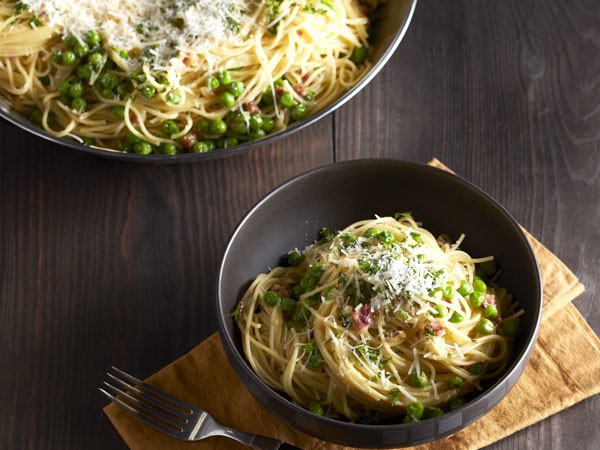Description
Take it from our dietitians, pasta can be part of a healthy meal plan. With these helpful tips, you can feel good about putting pasta night back on the menu.
Use Quality Cheese
It might sound counterintuitive, but by using a flavorful quality cheese, you can get away with using less overall. Try using fresh grated Asiago Stravecchio, Parmigiano Reggiano, or smoked gouda.
Choose Whole Wheat
You've probably heard it before. Whole wheat pasta is a tasty way to get more fiber and whole grains in your diet. But if you're not 100% sold, try mixing half whole wheat pasta with regular pasta.
Stretch It Out with Veggies
Vegetables don't have to be boring. Think caramelized onions, sautéed Brussel sprouts, grilled zucchini, even roasted butternut squash. Packing in as many veggies as you can is a smart and healthy way to stretch out a pasta dish.
Add Lean Protein
Shrimp, chicken, lean ground turkey, and lean turkey sausage are all flavorful yet lean options for adding protein to pasta.
Swap Heavy Cream
If your pasta recipe calls for heavy cream, try using half and half, whole milk, or 2% milk instead. You'll get the same creamy sauce without the extra fat and calories.
Fresh Herbs
Because most jarred pasta sauces are high in sodium, consider opting for a low-sodium version. Then use fresh herbs like basil, thyme, and oregano to season your dish.
Fill Your Plate with Greens
Load your plate with leafy greens or vegetables before dishing out the pasta. This will help keep your portion to a moderate amount. Because remember, if your pasta is full of lean protein, veggies, and whole grains, it will be much more filling than plain pasta.
Have Your Tortellini, And Your Soup, Too
Get your fix of meat- or cheese-stuffed tortellini in nutritious soup form. This will help keep your pasta portion to a moderate amount while reaping all the healthy benefits of vegetable soup.

